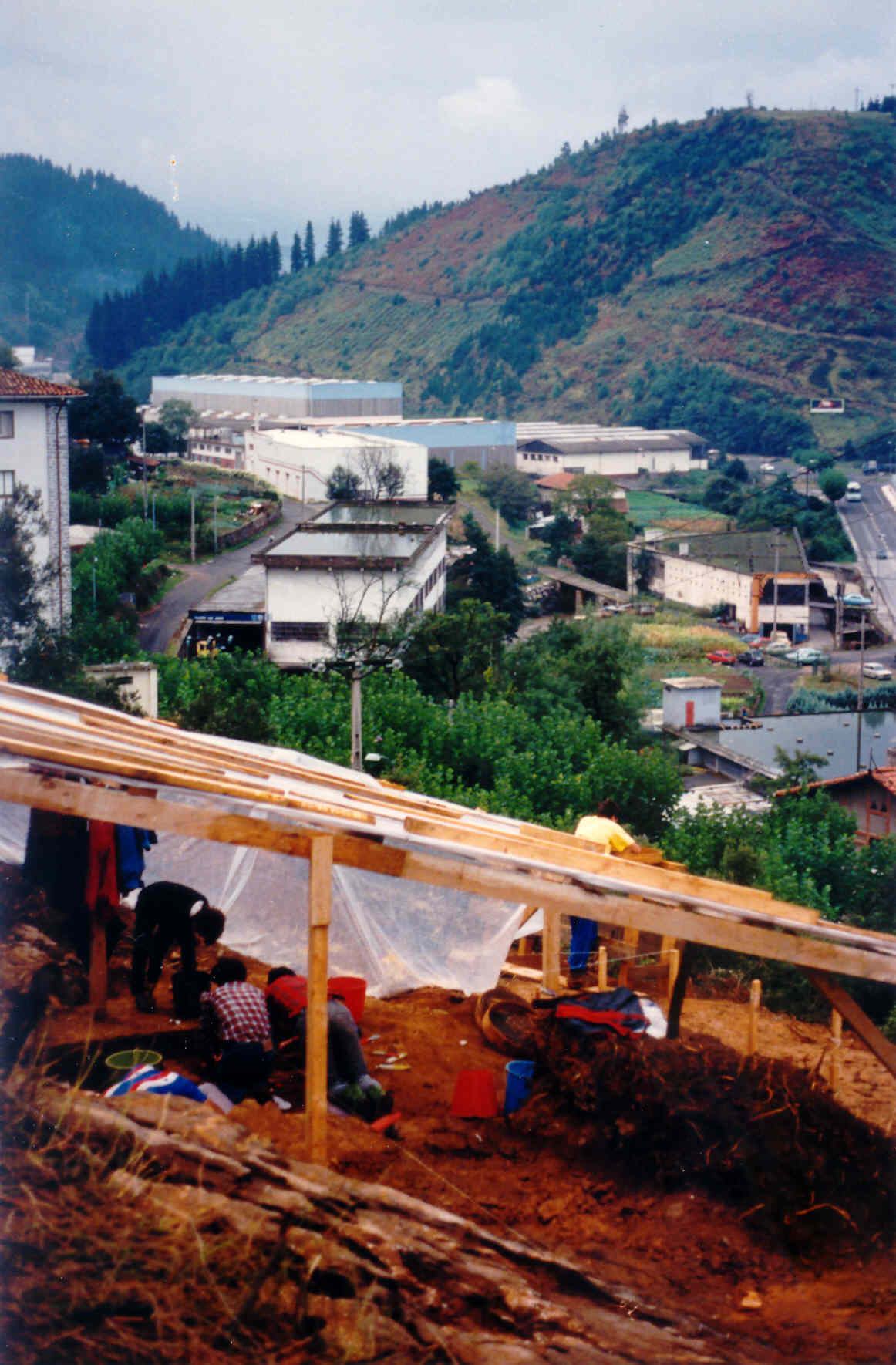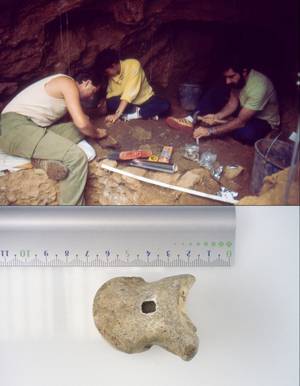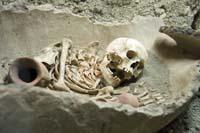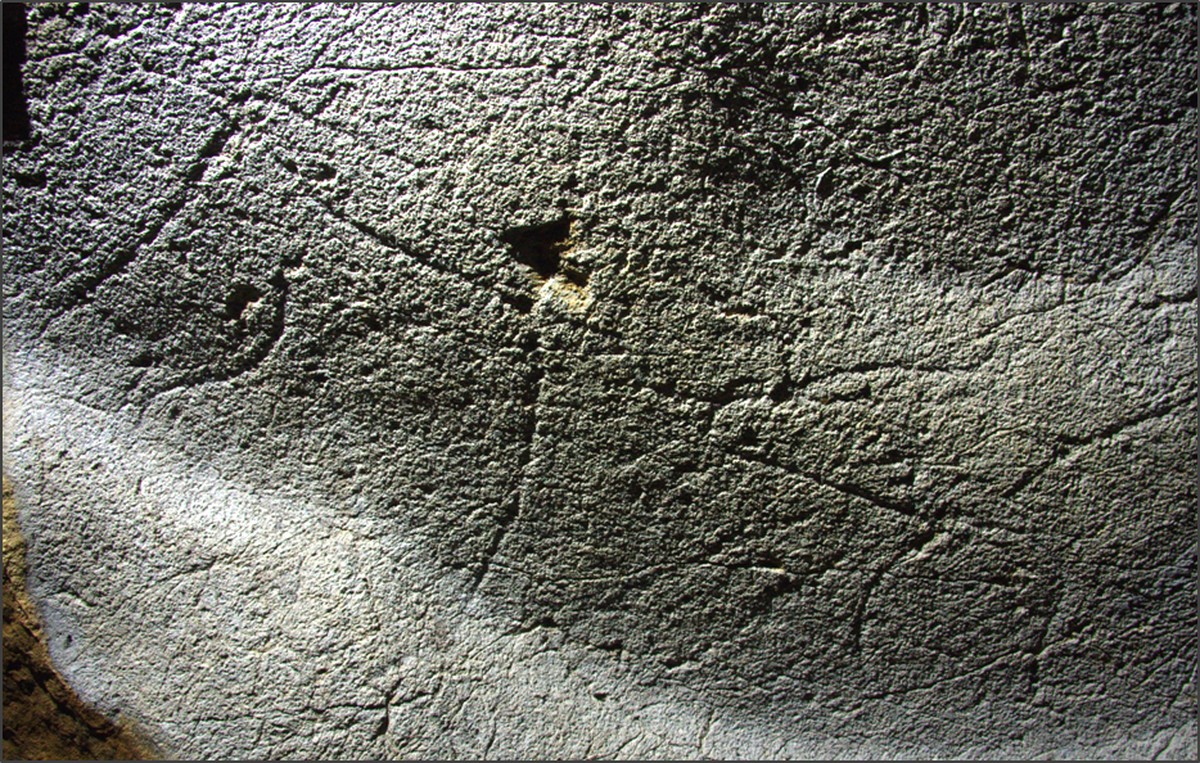The border between Neandertal and our species is clearer in the north of the Iberian peninsula
2014/05/06 Carton Virto, Eider - Elhuyar Zientzia Iturria: Elhuyar aldizkaria

Archaeologists of the UPV-EHU have achieved a clearer image of the border between the Middle Paleolithic and the Superior thanks to a finer dating technique by carbon-14. It was a time of transition, in which the disappearance of the technology associated with the Neanderthal occurred and the appearance of the associated to our species in a period of very few years, about 42.000 years ago. However, the remains found in different places did not show a very coherent image of the transition: In the Iberian Peninsula, some data in deposits indicated the early appearance of the human industry of Cro-Magnon against other more eastern areas of Europe. This, as a conclusion, would mean a relatively long period of coexistence between the Neanderthal and our ancestors in the Iberian peninsula. The conclusion has been discussed for many years for archaeologists, among other things because some have considered inadequate the remains used for dating.
With the aim of illustrating the story and chronology of the time of the transition, a team of archaeologists of the UPV/EHU, in collaboration with the Laboratory of Archaeology and History of the University of Oxford, has once again dated remains of three coats. In particular, samples of three deposits have been used: Labeko Koba (Arrasate), L'Arbreda (Girona), and La Viña (Asturias).
“We chose these deposits because they allowed us to control the entry points to the Iberian Peninsula; the best place for the western pass was the Labeko Cave and, for the east, the best deposit to measure the first steps of the cromagnon was L’Arbreda, according to the archaeologist Alvaro Arrizabalaga and one of the authors of the study. “We also wanted to investigate at what speed they extended through the Cantabrian Cornice and that is why we took the cave of La Viña in Asturias as the third deposit,” he adds. In three caves have been found vestiges of the main technologies in transition, so they were adequate to review the chronology.
Punctual collagen
For the preparation of new datations, only bone samples representing the influence of human activity have been selected, and the ultrafiltration method has been used to prepare samples.This method allows to purify the samples very well and measure the real age through carbon 14. In fact, the limit between the Middle Paleolithic and the Superior is at the limit of carbon dating 14, so “the measurements of this time are very critical”, warns Arrizabalaga. Despite low pollution, it gives an incorrect datation for the sample, usually more recent than it is, and ultrafiltration is used to avoid it. The measurement is done by collagen extracted from the bone, “since with collagen we have no doubt that it is free of contamination”.
In light of the results of the new datations, the chronology of the technologies in transition is adjusted to the order of stratigraphy for these technologies, and in the three caves, 42.000 years ago, the appearance of the technology of the cromagnon is situated. In addition, there is no overlap between technologies imputed to the Neanderthal and assigned to cromagnon. The results have been published in the journal Journal of Human Evolution.
No coexistence in the Iberian Peninsula
According to Arrizabalaga, the new datations have shown that “for the past 20-25 years we have been under a mirror”. “For years we have believed that when the first human beings of our species arrived in the Iberian peninsula they found Neanderthals, with a long coexistence, between 5,000 and 10,000 years, and with a long period of time, there were great opportunities for cultural and technological exchange, as well as for biological hybridization, but –he adds– these results did not give rise.”
Not at least in the Iberian peninsula. Arrizabalaga does not question that there was a hybridization between the Neanderthal and our ancestors, and although he considers too “daring” the elaboration of the European map of that time, he has defended the hypothesis that our ancestors entered Europe hybridized. “Hybridization took place in the Middle East, between 60,000 and 50,000 years ago, and in our scenario it is already hybridized to Europe; in Europe it did not live with the Neanderthal, or it did in a very short time; our datations, and most of the results, do very well a hypothesis with that,” he explained.

Gai honi buruzko eduki gehiago
Elhuyarrek garatutako teknologia






